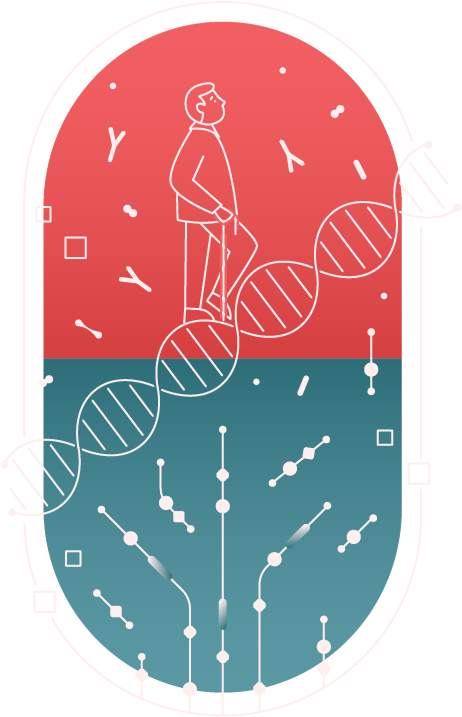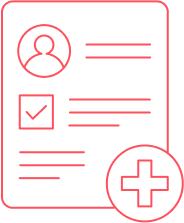
🎉 The Inclusive Alpha Founder Report is live!
Read now

🎉 The Inclusive Alpha Founder Report is live!


But new therapies and smarter gadgets are not enough to cope with tomorrow’s demographic tsunami. Wearables can’t reach consumers without data and cybersecurity guardrails built-in. Promising drug targets could go unfunded if clinical trials are too costly, especially for diseases with smaller patient populations and markets. Rapid diagnostics are little use if patients with suspected cancer take weeks to get a first appointment. Too many frontier innovations are confined to private clinics for the wealthy. And clinical research continues to under-provision for minority racial and ethnic groups and women.
We’re relying on infrastructure designed for another century, where healthcare was episodic and reactive and few people lived to see their 70th birthday. It’s like developing AI-powered digital twins of Victorian era pipes.
We need a new infrastructure that enables the interplay of data, tooling, physical equipment and health services. Think of predictive AI that can optimise clinical trial design by matching drugs to the right patient cohorts, based on gender, race or genetics. Research and development (R&D) notebooks allowing technicians to record and share experimental data to collaborate seamlessly. Cloud platforms that let scientists run experiments without their own physical labs. Verification platforms to make it simple for healthcare workers to be safely and securely onboarded to meet patient demand spikes.
We call this space ‘bio-infrastructure’, and it sits at the intersection of healthcare, deep-tech, infrastructure and artificial intelligence. And this is not just about software and data but atoms too; the labs, clinics, servers, and factories that will underpin a long and healthy life for all.
Coining an investment thesis can give shape and sense to what might otherwise look like fragmented events or opportunities. The BRICS acronym, for instance, reframed global investing, and generated a wave of subsequent country groupings that provided nuance to the homogenous ‘emerging markets’. ‘FAANG’ captured the outsized impact of a small cluster of Big Tech companies and how they were shaping the economy as a whole. Web3 framed a new generation of digital businesses emphasising user control and ownership in virtual spaces.

Startups in this space are solving complex problems that lurk in the bowels of the healthcare system. These companies don’t fit the traditional categories investors are accustomed to; they are neither purely drug developers nor conventional software business. But their solutions are, collectively, producing a layer of intelligence that will power the health system of tomorrow, from drug discovery to the care economy.
Think of AlphaFold, the protein structure prediction tool developed by Google DeepMind and the European Molecular Biology Laboratory. This platform, which won its lead developers the Nobel prize in chemistry in 2024, is more than an asset or piece of software; it’s an engine of discovery for the life sciences. It has already powered the first AI-designed drugs going into clinical trials.
Bio-infrastructure is not just an opportunity for companies, but for nations themselves to build sovereign advantage, nurturing domestic biotech capabilities, leveraging national health data assets to drive discovery and invention, and delivering personalised healthcare for a healthy ageing population.
In every technological shift, there's a moment when the "picks and shovels"—the tools, platforms and services that make everything else possible—become investable in their own right. The companies we invest in now won’t just power better care — they’ll define how care is delivered for generations. This market map shares just some of the startups that are part of this emerging bio-infrastructure wave across five pillars:


Automata aims to enable new opportunities for innovation with automation. They created the world's first fully automated lab bench, and its accompanying software. This enables labs to use staff and resources more effectively by ensuring total walkaway time and consistency, without compromising on valuable lab space. Their integrated solution overcomes the limits of benchtop automation, driving higher throughput and enhanced traceability across various applications.
Benchling provides a cloud-based platform for scientists making groundbreaking discoveries in disciplines such as gene editing and protein folding. It is used by over 200,000 scientists across 1,200 biotech and pharmaceutical companies to record and organise scientific data. Their platform provides end-to-end data management, letting scientists connect, manage, and analyse data from all the lab instruments and data analysis tools they rely on.
Emerald Cloud Lab is a cloud laboratory - a fully software-controlled, automated life science laboratory that allows scientists to design, execute, and analyse experiments remotely from anywhere. It is agile and scalable for users ranging from startups and academcics to graduate learning. They are equipped with over 200 different instrument models remotely controlled by a single unified software interface, ECL Command Center, empowering clients to orchestrate nearly any in vitro biology or chemistry experiment from cradle to grave at the click of a button with on-demand access to instrumentation, samples, and data.
LabGenius Therapeutics has developed EVA™ – a highly automated closed-loop discovery engine that enables the rapid identification and co-optimisation of complex multispecific / multivalent antibodies. By largely removing human bias from the discovery process, EVA™ consistently identifies high-performing antibodies with non-intuitive designs. For its wholly-owned pipeline of T-cell engagers and Antibody-drug Conjugates, LabGenius Therapeutics is using their platform to address the challenge of on-target, off-tumour toxicity in solid tumours.
Labtree is an R&D platform that identifies experimental flaws before they lose scientists’ time and money. It enables real-time collaboration across the entire R&D team with real-time updates, shared workspaces, and integrated communication tools. Their platform combines an electronic lab notebook with project management and biostatistics, streamlining workflows, tracking experiments and managing tasks in a single platform. Their AI co-pilot can assist with experimental design, data analysis, and creating interactive protocols to accelerate discoveries.
Lifebit is a precision medicine software company that builds enterprise data platforms for use by organisations with sensitive genomic and biomedical datasets, empowering therapeutic leaders to access and analyse siloed biomedical data. They offer a federated data intelligence platform that empowers research teams to securely analyse sensitive health data, across borders, institutions, and clouds, all in one place. Their patented technology allows researchers to run analyses on multiple, distributed datasets in-situ and avoid risky movement of highly sensitive data.
Lila is on a mission to build scientific superintelligence to solve humankind's greatest challenges. They are introducing the world’s first scientific superintelligence platform and autonomous labs for life, chemical, and materials sciences, to rapidly expand human knowledge and push the limits of what is possible today. They are devising a new system where AI models, working in concert with human scientific ingenuity, are integrated with an autonomous platform that they call an AI Science Factory (AISF™).
Micrographia Bio is a pioneering AI-first applied life sciences company with a mission to deliver a new era of drug discovery through spatial proteomics. They visualise proteins in their spatial context, building solutions to improve the probability of success in drug discovery. Their platform harnesses a novel strategy for highly multiplexed microscopy and state-of-the-art machine-intelligent computer vision to determine the true mechanism of action of any potential therapeutic.
Reshape Biotech developed a robotic imaging system replete with software and AI models to help scientists track visual changes such as color or cell-growth rates from petri dishes and similar plate formats. They offer a fully automated, AI-powered petri and microtiter plate analysis. They combine intelligent automation with real-time AI analysis to help labs run faster, make better decisions, and scale effortlessly.
Vivodyne is a biotechnology company that is changing how scientists study human biology and develop therapeutics. They believe that biotech's biggest challenge can be solved with a combination of complex human tissue engineering, highly scalable robotics, and cutting-edge AI models, which serve as the core pillars that allow the generation of predictive human data before clinical trials.


Axiom has created the world's largest human toxicity dataset and is working to minimise clinical trial failures linked to drug toxicity – particularly liver injury – by replacing traditional animal experiments with AI-driven predictions.
BioAge is building a pipeline of therapies to treat cardio-metabolic disease by targeting the biology of human aging, through a bespoke data science ecosystem with AI and ML-enabled insights from our human aging cohorts, an in-house translational aging core in naturally aged mice, and expertise across discovery and development.
Bioptimus' mission is to build the first universal AI foundation model for biology to fuel breakthrough discoveries and accelerate innovations in biomedicine and beyond. Just as ChatGPT has taken the world by storm as a super-smart generative AI tool capable of natural language conversation in text form, Bioptimus is taking that concept but training its model specifically for downstream biological applications.
GRAIL is focused on alleviating the global burden of cancer by using the power of next-generation sequencing, population-scale clinical studies, and state-of-the-art machine learning, software, and automation to detect and identify multiple deadly cancer types in earlier stages.
Huma owns and operates digital and AI-first health products powered by the Huma Cloud Platform, including Aluna, myGP, GDm, eConsult, and more. The platform can be used for applications from rapidly building health super apps, regulated solutions (SaMD), and remote patient monitoring (RPM) tools – including virtual wards and hospital-at-home models – to launching AI-first screening and diagnostic tools, triage, automated consultations, appointment booking, messaging, document delivery, and educational campaigns.
Inato developed an AI-powered patient prescreening tool to make it easier and faster for research sites to assess patient eligibility for clinical trial opportunities. Research sites across the U.S. can use their AI-enabled patient prescreening feature to significantly streamline patient identification and review – with no electronic medical record or clinical trial management system integration required. By enabling all community sites to offer the right trials to their patients, they will not only make clinical research more inclusive, but also more efficient.
Lindus calls itself the “anti-CRO” (contract research organisation). They offer a new model for running end-to-end clinical studies, including everything that a traditional clinical research organisation does — protocol writing, trial design, patient recruitment, and clinical operations delivery — but without the headaches, delays, or costs.
Mindpeak is the leading company in AI-powered digital pathology, bridging the gap from biomarker development to clinical diagnostics. Founded in 2018, Mindpeak’s AI technology enables laboratories to extract actionable insights from H&E, IHC, and mIF tissue images—ranging from subcellular biomarker quantification to predictive patient stratification. The solutions support both routine diagnostics and the translation of novel biomarkers into real-world clinical applications.
MultiOmic aims to unravel the heterogeneity in metabolic syndrome biology using a multi-omics approach combined with deep patient phenotyping. By studying patients longitudinally along different phases of the disease continuum, MultiOmic is identifying disease drivers in specific patient clusters, and using these disease signatures to develop precision medicine assets with the potential to transform the lives of of patients with metabolic syndrome-related diseases.
Ochre Bio is developing novel RNA medicines for under-treated chronic liver diseases. Its proprietary discovery platform combines machine learning and big human datasets, with in-house RNA chemistry, and testing in live human donor livers.
Owkin is pioneering advanced agentic AI that can process vast amounts of biological data, uncover hidden causal relationships, and generate new actionable insights. They generate and access rich, multimodal patient data and biological samples across diverse populations from top academic research institutions.
PhaseV is a technology company that leverages advanced causal machine learning and GenAI, augmented by an expansive data lake and real-world data (RWD), to empower biopharma sponsors and CROs with fast, accurate, and efficient clinical development decisions. Their platform allows clinical development teams to design studies and make real-time changes during the course of a trial in order to speed drug development more efficiently. The platform has also been used to identify drugs that can be repurposed to treat other conditions.
R.Grid has developed two industry-leading products leveraging its AI-powered automation engine. Together, Inclusive and TrialEngine form the only end-to-end platform to automate the back office of clinical trials, from pre-trial to trial close. Both are designed to tackle trial management bottlenecks and automate manual processes, supporting their mission of making clinical trials faster and more successful.
Strive Health uses machine learning to optimise drug dosages across a diverse range of care settings, ensuring safer and more effective treatments. Their AI model maps data points from clusters of millions to the active patient, and extrapolates from that to identify the right treatment decision at every point in time. This delivers real-time, patient-specific insights without the need for manual data entry, helping clinicians make faster, more confident decisions while reducing cognitive load during critical moments.
Tempus is a technology company advancing precision medicine through the practical application of artificial intelligence in healthcare. With one of the world’s largest libraries of clinical and molecular data, and an operating system to make that data accessible and useful, Tempus enables physicians to make real-time, data-driven decisions to deliver personalized patient care and in parallel facilitates discovery, development and delivery of optimal therapeutics.
Triomics have developed OncoLLM, their enterprise-grade AI platform purpose-built for oncology. Rather than being a single monolithic model, OncoLLM is a framework—a system of interoperable AI components engineered to integrate into clinical environments, automate data abstraction, and enable real-world decision-making at scale. They can match cancer patients to trials with 95% accuracy – comparable to the results of manual processing – but get through cases in a matter of minutes.
Unlearn.ai is a digital twin developer that uses AI to analyse patient health records to build a model for each participant in a clinical trial, then uses the digital doppelganger to predict how each patient would fare if given the placebo treatment in the trial. This enables more informed go/no-go decisions that save resources and fast-track the most promising therapies. This allows accelerated trial timelines, faster decision-making and trial design optimization.
Verge has pioneered an all-in-human, AI-powered drug discovery platform, a closed-loop machine learning system combining industry-leading proprietary human genomics with advanced computational tools to predict new drugs with a higher probability of clinical success.

Domestic biotechnology capabilities are essential to security, and economic resilience, on par with energy, defense, and food security. And they are accessible to many more countries, thanks to advances in software, cloud and AI. We’re backing:

Archon Biosciences is a biotechnology company developing geometrically tunable protein therapeutics with differentiated distribution, engagement and function to target pathways other technologies cannot. Their proprietary protein structures, known as Antibody Cages or AbCs, combine two molecular-based biomedical tools, naturally occurring antibodies and custom-designed proteins, to create a single new protein structure. These AbCs are optimized with the aid of generative AI to travel in the body in controllable ways and engage with target cells in a more specific manner.
Catalent is a leading global contract development and manufacturing organisation (CDMO) whose mission is to develop, manufacture, and supply products. Catalent is dedicated to supporting product development, launch, and full life-cycle supply.
Culture is revolutionising upstream bioprocess development with cloud-native software that makes data accessible, contextualised, and actionable, unlocking the full potential of AI and machine learning in bioprocessing. They aim to permanently reduce the complexity of biomanufacturing, allowing their customers to avoid expensive investments in equipment and reach the market sooner.
Genseq’s biobanking and sample management service has been designed to ensure samples are stored and handled correctly at all times. Their laboratory has the capacity to accommodate >500,000 samples at variable temperatures. The service includes real-time temperature monitoring, an advanced laboratory information management system (LIMS), and a 24/7 on-call scientist.
Lonza is one of the world’s largest contract development and manufacturing organizations (CDMOs), spanning early development to drug substance and drug product manufacturing, in established and emerging technologies including mammalian biologics, small molecules, highly potent active pharmaceutical ingredients (APIs), bioconjugates, mRNA, microbial, and cell and gene.
NTX was founded to democratise access to medicines by enabling on-demand, decentralised biomanufacturing. Their proprietary platforms utilise cell-free synthetic biology in a continuous flow system, giving researchers and drug developers unprecedented speed and control, empowering scientists to deliver accessible, high-quality, and rapidly scalable production solutions.
Nuclera is the pioneer in bringing rapid protein prototyping to the benchtop. They make proteins accessible through eProtein DiscoveryTM. The eProtein Discovery system is designed to speed up protein expression and purification optimisation in research labs, particularly those using AI including ML for protein design. The system accelerates workflows, achieving results in days rather than the months required by traditional cell-based methods.
Stylus Medicine is a biotechnology company dedicated to developing transformative in vivo genetic medicines. Their initial focus is to create in vivo CAR-T therapies in an approach that enables precise, durable CAR-T generation inside the body. These treatments leverage a cell-targeted lipid nanoparticle (LNP) to deliver therapeutic payloads directly to immune cells in vivo, which has the potential to transform patient treatment, improve patient accessibility and redefine what is possible in medicine.
Wheeler Bio is a biomanufacturing pioneer developing a new contract development and manufacturing organisation (CDMO) model to bring therapeutic leads to the clinic faster, without the risk and cost associated with traditional outsourcing models. Through its unique scientific platform, Modular CMC, Wheeler Bio revolutionises the speed of drug development by enabling the rapid advancement of antibody-based therapeutic candidates from discovery into human clinical trials while establishing a robust chemistry, manufacturing, and controls (CMC) package vital for regulatory filings and ongoing cGMP manufacturing.
WuXi Biologics is a leading global Contract Research, Development and Manufacturing Organization (CRDMO) offering end-to-end solutions that enable partners to discover, develop and manufacture biologics from concept to commercialization.
bit.bio is a synthetic biology company providing human cells for research, drug discovery and cell therapy. The company applies a patented safe harbour gene-targeting approach (opti-ox™) to inducibly express transcription factor combinations that reprogram human induced pluripotent stem cells (iPSCs) into highly defined and mature human cell types. The team thrives on a simple yet powerful mission: coding cells for novel cures.


BrightInsight provides a regulated digital‑health platform for biopharma & med‑tech with built‑in security/privacy (HITRUST, HIPAA, GDPR) and audit‑ready evidence to enable companies to scale, while maintaining compliance.
Censinet provides risk assessment solutions for healthcare organisations via real‑time enterprise‑risk management to automate vendor assessments, continuous risk‑intelligence, and audit‑ready reporting via a HIPAA‑secure platform.
Cynerio has developed a customisable solutions for healthcare organisations by cybersecurity compliance through a customisable asset‑management platform that provides continuous device discovery, risk scoring, threat detection, and actionable intelligence.
Freshpaint provides a healthcare privacy platform that auto‑instruments analytics tracking, de‑identifies protected health information for HIPAA/GDPR, and delivers top-tier privacy first marketing for healthcare clients who digitally advertise on third-party platforms (Google Analytics, ads, BI) through software development kits with real‑time consent controls.
HealthVerity approaches real-world data acquisition and governance to ensure HIPAA, GDPR, and other regulatory framework compliance for data privacy by automating de‑identification, consent, identity resolution, and data‑exchange workflows.
Keragon's AI‑powered HIPAA‑compliant workflow‑automation platform with 300+ healthcare integrations enables rapid and embedded compliance automations into clinical software.
Ketryx's lifecycle management software accelerates product development by ensuring FDA‑compliance traceability (linking documentation, tests & code, etc.) into a single, AI‑enhanced, traceable platform.


Ambience is the only AI scribing and coding solution designed to support 100+ specialties and subspecialties, and is directly integrated with Epic, Cerner, athenahealth, and other leading EHRs. They support clinicians before, during, and after each patient touchpoint with AI and automated workflows. By partnering with Ambience, healthcare systems reduce documentation time, improve coding integrity, and unlock revenue.
Axuall is a cutting-edge workforce intelligence company powered by a national real-time practitioner data network built with leading healthcare systems. Their platform connects health systems, staffing firms, and digital health groups to a vast array of ongoing clinician data, providing insights for network planning, analytics, and reporting. They leverage real-time clinician data to transform the way industry leaders analyze, recruit, onboard, and engage their most valuable resource: clinicians.
CareRev is the nurse-founded and nurse-led leading workforce platform built for the dynamic needs of acute healthcare. Their app-based, dual-sided solution empowers hospitals and health systems to better manage their internal staffing resources while seamlessly connecting with a flexible, local network of per diem clinicians. By integrating with existing scheduling systems, they enable real-time self-scheduling, enhance internal float pools with smart automation, and give clinicians the freedom to pick up shifts that fit their lives, all while supporting facilities with scalable, cost-effective staffing strategies.
Cera is a digital-first home healthcare company that harnesses technology to bring care directly to homes, transforming the healthcare landscape by providing higher quality services at a fraction of the cost. Their technology and AI are used every single day across their community of 10,000 healthcare professionals to increase efficiency and improve patient outcomes, reducing hospitalisations by up to 70%. Their app uses data analytics and machine learning to empower those providing healthcare services and improving outcomes for those receiving them.
Certify's goal is to reduce the cost of healthcare by streamlining access to provider data and reducing administrative and regulatory burdens on healthcare organizations. They have built an API-first, UI-agnostic, end-to-end provider network management platform, automating licensing, enrollment, credentialing, and network monitoring. With direct integrations into 100's of primary sources, the company is uniquely positioned to enhance visibility into the entire provider network management process.
Lifted is on a mission to fix the recruitment and retention crisis in health and social care. Through their technology platform, health and care providers can get matched with suitable candidates overseas and in the UK. They have thousands of pre-screened candidates and clients can view profiles, interview and hire all on that platform.
Motivo solves clinical supervision for behavioral health organisations in US states, matching top rated clinical supervisors with associate-level therapists. Lack of supervisors and cost-prohibitive supervision rates are a significant blocker to professional development. Motivo provides high quality evidence-based clinical supervision to over 200 hispitals, treatment centres and community mental health organisations.
Network Locum is the UK's leading online community for GP locums. Their Connected Scheduling platform provides a staff bank, rota tool and a clinician network all in one place to improve fill rates, cut admin time, and reduce costs. With their innovative tech they are working with healthcare professionals to lead the way in tackling staffing inefficiencies in our healthcare system.
Tonic App is a platform created for doctors, by doctors. It is an all-in-one medical platform that aggregates tools & content that physicians need these days to better diagnose and treat their patients. Clinical content is accredited by the European Accreditation Council for Continuing Medical Education (UEMS-EACCME) as a certified digital library.